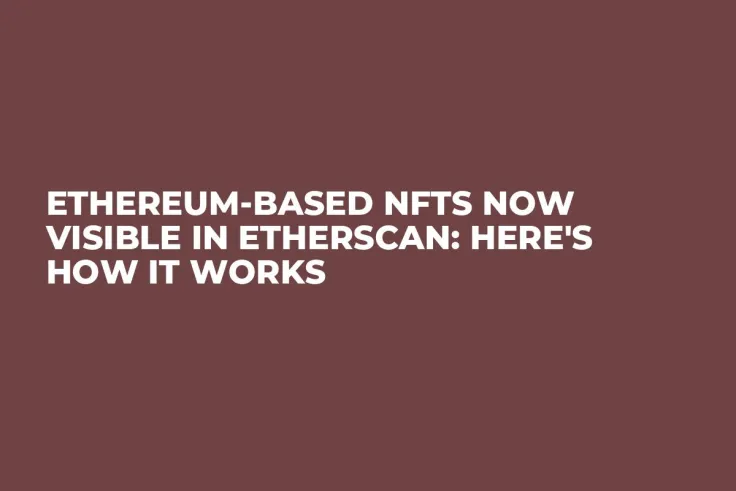
Today, June 1, 2021, Ethereum (ETH) blockchain explorer Etherscan announced a major addition to its functionality.
Etherscan starts tracking NFT transfers
Popular analytical service for Ethereum (ETH) transactions, Etherscan, has shared an update on its tracking toolkit.
Did you know?
— Etherscan.io (@etherscan) June 1, 2021
? Transaction Action now supports most NFT activity on Ethereum - including both ERC721 and ERC1155! pic.twitter.com/MAOQcIIU9Y
Its "Transaction Action" module now displays all transfers of non-fungible tokens. With this update, it indexes two red-hot standards on the digital collectibles scene: ERC721 and ERC1155.
As depicted on the screenshots shared by the Etherscan team, the explorer tracks transfers, burn events and distributions, i.e., the entire set of the most important events in an NFT's lifespan.
It also shows the name of the marketplace where the trade is confirmed as well as the wallet addresses of the transaction participants.
Why is this crucial?
This release significantly advances the transparency and user experience of digital collectibles trading. Also, it eases the process of buying/selling for newbies, leaving no room for any sort of fraudulent activity.
The non-fungible tokens segment gained a lot of traction in 2021. Many artists, songwriters and producers tokenized their artwork on Ethereum (ETH).
As the most popular smart contract environment, Ethereum (ETH) also provides a technical framework for the majority of NFT-focused products.
Besides Ethereum (ETH), many NFTs are released on the Tron (TRX) and Tezos (XTZ) platforms.
 Arman Shirinyan
Arman Shirinyan Alex Dovbnya
Alex Dovbnya Caroline Amosun
Caroline Amosun Dan Burgin
Dan Burgin